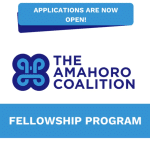The American education system is similar to the Canadian, and both require that students complete 12 years of primary and secondary education prior to attending university or college for undergraduate studies. This may be accomplished either at public (or government-operated) schools, or at private schools. Postgraduate Master’s students need to have completed their Bachelors’ Degree programme.
Foreign students who would like to attend an American or Canadian college or university must have completed a coursework that is equivalent to what is taught at the schools. Undergraduate schools offer either a two-year degree (an associate degree) or a four-year degree (a bachelors degree) in a specific course of study. Students who complete an associate degree can continue their education at a four-year school and eventually complete a bachelor degree.
Funding Your Education In US or Canada
While the cost of an American or Canadian education is high and can add up to tens of thousands of US dollars, it is an investment worth making, when it’s affordable to you. Since you will be required to prove you have the necessary financial resources in order to obtain an international student visa, it is very important to first determine how much your total USA education will cost. Once you have determined how much international student financing you will need, you must next determine how you will obtain that student financing. Are your parents financing your USA education? Have you obtained an international student scholarship? Have you been able to secure an international student loan?
Admissions Info. for International Students
Admission at US/Canadian colleges and universities can be very competitive for international students but much depends on the school in question and the qualifications of the international student. In order to be accepted at a TOP US school for undergraduate or postgraduate studies, you must have attained good grades, completed challenging coursework, obtained sufficient financing, and developed a strong command of the English language.
Less competitive schools have less stringent admissions for international students.
Each US school sets its own international student admissions requirements, which is why you should visit the college/university website for specific information. Different US schools will have different minimum requirements for grades as well as for standardized tests (such as the TOEFL, GRE and SAT). Even within the same school, there may be different requirements, depending on the major (or course of study) selected.
The higher your grades and test scores, the better your chances of being accepted by at least one top school. Above all, successful admissions for international students to a top US school requires preparation.
The admissions process is a long one, and should ideally begin at least 18 months before your expected arrival in the US. Organization and planning are very important because timely completion of all the necessary steps is key.
Application Schedule
The following information will help you plan for the college application process by giving you time frame by which each of the necessary steps should be completed. Following a schedule will help you make sure that everything is done on time and that no items or steps are forgotten. You can apply similar steps for other countries in Europe, UK.
18 months before beginning your studies in the US:
*** Begin your search of possible US colleges or universities that you would like to attend. Read through college/university reference guides and visit their websites. Try to talk with your relatives and friends who have studied in the US. Request information from 10 to 20 different schools so that you can make a good decision on where to apply.
*** Register and start preparing for the TOEFL and other entrance tests (such as the SAT- for undergraduate studies- or GRE-for postgraduate studies-).
*** Continue to work hard at your subjects if you are still in school. Good grades in the courses you are taking now will count heavily in the admission decisions.
15 months before:
*** Take the TOEFL and other entrance tests. Most universities require you to take the test before December, so taking it a bit earlier gives you an opportunity to take it again and improve your score, if necessary.
12 months before:
*** Send letters to colleges you have selected requesting applications and information, or obtain this information and necessary forms from their websites. You should choose:
(a) one or two schools that you really like, but may be too difficult to get into;
(b) two or three that you also like and think will accept you;
(c) one or two which may not be your favorites, but you are quite sure will accept you.
*** Identify two or three teachers/lectures or other people whom know you well and ask them to write recommendation letters for you. You may apply the strategies mentioned in Chapter 5 of The Scholarship MasterPlan eBook. For undergraduate applicants the best references are teachers and your school principal. Family friends, religious counselors, and others should be used only if they know you very well and can speak specifically about your academic goals and potential.
*** Postgraduate students should obtain letters from their lecturers or professionals in their field whom they have worked with and who can speak specifically about their academic potential and relevant accomplishments.
*** Ask the schools you have attended to start preparing your transcripts. These are official school documents that show the courses you have studied and the grades you have received in those courses.
*** If your previous TOEFL, SAT, or GRE scores were not satisfactory, register for the test again.
11 months before:
*** If you have not yet received the application forms you requested from the schools you wrote to, send another letter repeating your request.
*** Study the applications you have received. Note carefully the deadlines on each of them. Remember to allow time for delays in the mail.
*** Ask your schools to send certified copies of your academic transcripts to each of the schools where you are applying.
*** Ask your teachers to write their letters of recommendation for you. Give them the forms provided by the schools and a stamped, addressed envelope for each letter they will be mailing.
*** Undergraduate students should write their application essay. This essay is an important part of the application. It should reflect who you are and what you feel is important. Try not to repeat information you have provided in other parts of the application, instead work to make the essay unique and personal. Get comments on it from an English teacher or reliable friends. Follow the easy guidelines provided in Chapter 4 of The Scholarship MasterPlan.
*** Graduate students should write their statement of purpose if the schools have indicated that they require one. This is an important part of the application. You should show in your statement how your education so far has created a foundation for your goals, and how your proposed coursework in the US will help you achieve those goals. You should be as specific as possible about your research interests and past accomplishments.
*** Make photocopies of the applications and begin to fill in the required information on the copies. You will later transfer the information to the originals. If you are confuse of any questions, seek advice from someone you think can help, or contact the school if appropriate.
10 months before:
*** Complete your essays and application forms, including the financial aid application forms, using the originals (not the copies). Type or write by hand very neatly and carefull
y. The finished applications will be your introduction to the schools, so you want to make them look good. Keep a copy of the completed applications for your records and application of scholarships. Mail the originals by airmail in time to meet the deadlines.
*** Take the TOEFL and other exams again, if you need to improve your scores.
*** Check with your referees and your school to make sure your recommendations and transcripts have been mailed in time to meet the deadlines.
9 months before:
*** It is not unusual for schools to request more information or resubmission of something you have already sent. Respond promptly to any requests you receive.
4-5 months before:
*** You will start hearing decisions from the schools. Contact the admissions office at any school that you do not hear from.
*** Accept only one school’s offer, and let the other schools know of your decision. Ask the school you have chosen to send you the I-20 form for processing your student Visa.
*** Make housing arrangements. Apply for a passport if you do not already have one.
3 months before:
*** Get a visa application form from the US embassy. Make travel arrangements. Schedule your trip so you arrive at least 15 days prior to your school’s orientation.
More Resource: www.usastudyguide.com/
Do You Like What You Read? Would You Like to Receive Future Updates from After School Africa? CLICK HERE to Subscribe by Email, Check you Mailbox or Spam mail to activate your Subscription and Hold on for streams of coming publications.









